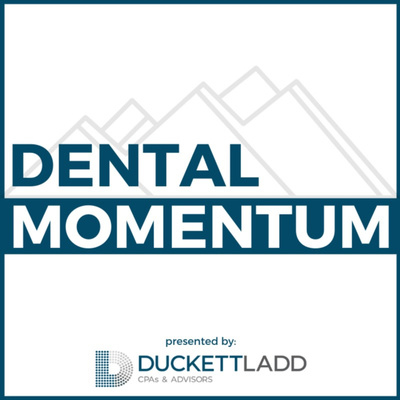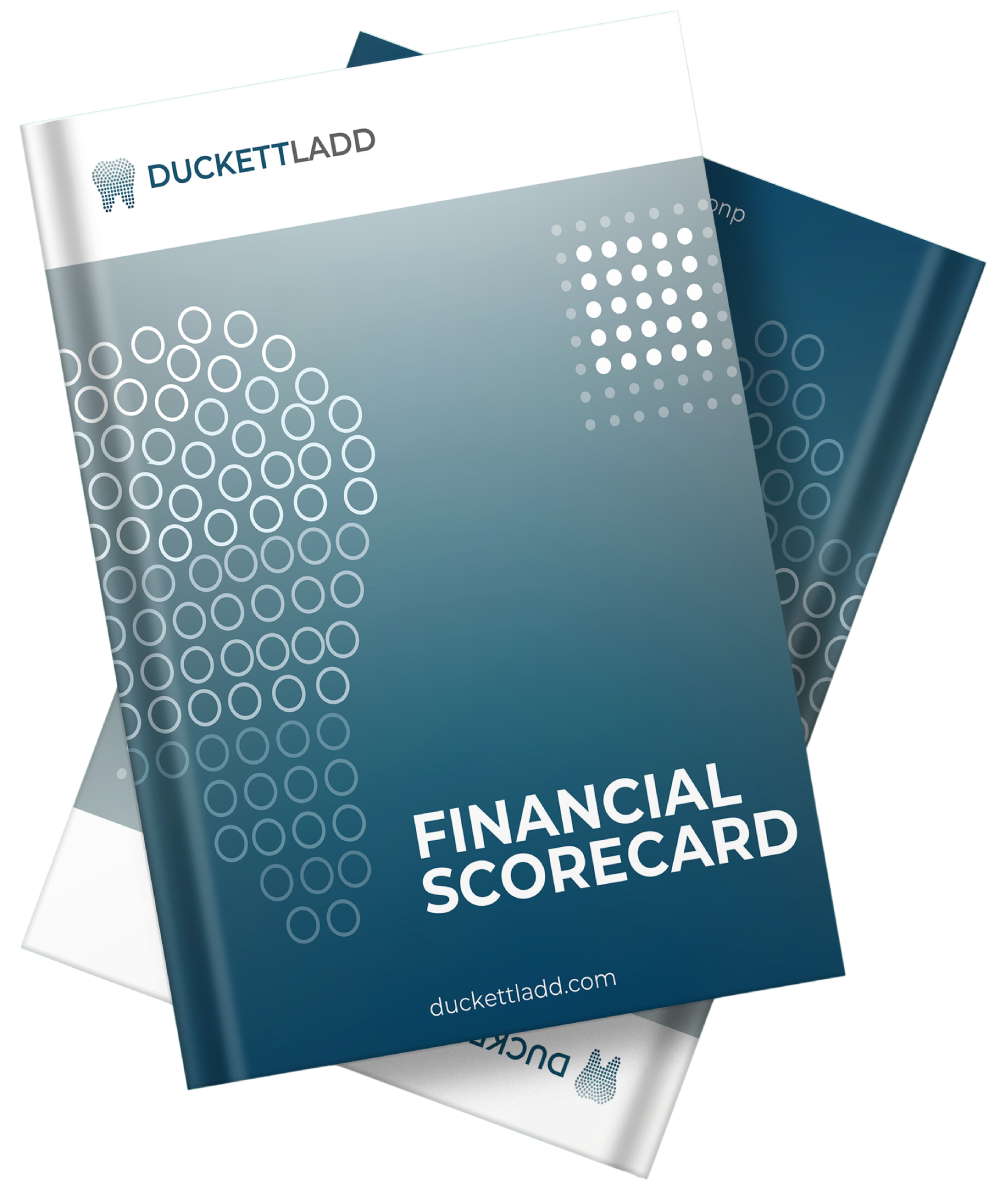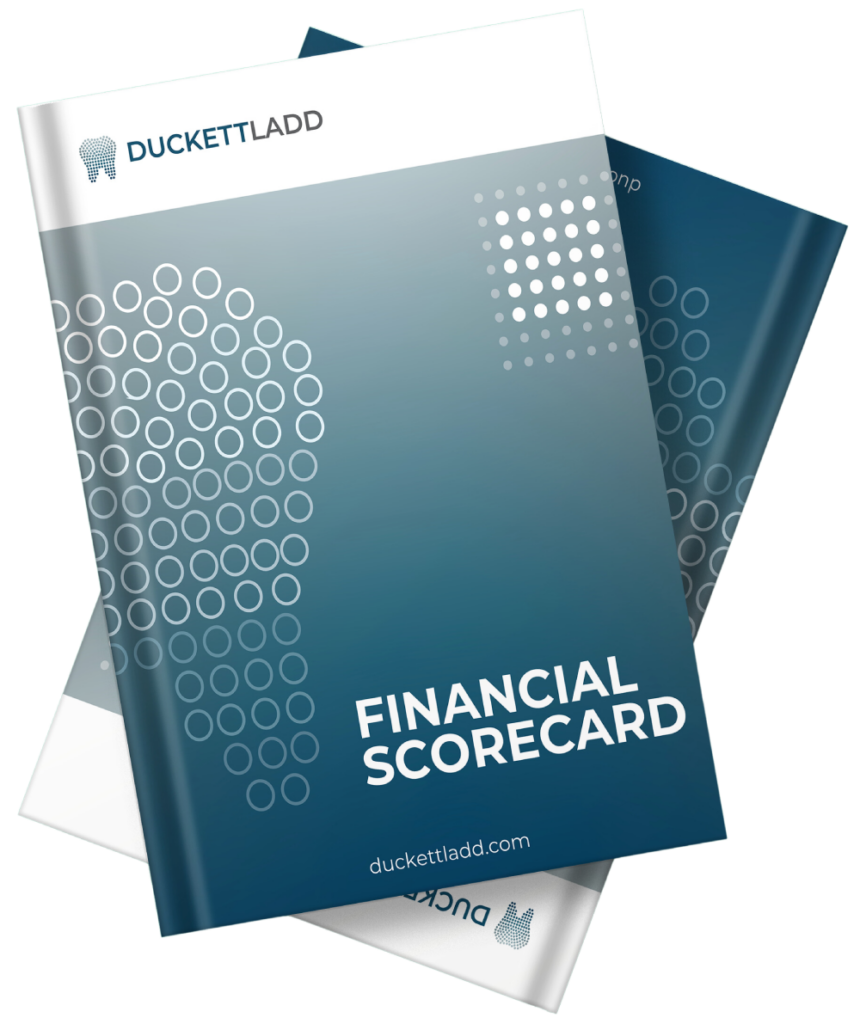Before buying or selling as part of a dental practice transition, an accurate valuation is essential. For sellers, valuation helps establish the right listing price and strengthens negotiation. For buyers, it ensures that you do not overpay when pursuing growth or a new ownership opportunity. A precise understanding of value gives both sides confidence in making informed decisions that shape the future of the practice.
Valuation Factors in Dental Practice Transitions
Determining the proper valuation of a dental practice requires a detailed review of several key elements. The most important considerations include:
- Existing assets
- Outstanding debts and liabilities
- Current business size and projected revenues
These factors provide a complete financial picture that influences negotiations and final sale terms.
At Duckett Ladd, our team of financial experts works exclusively with dental professionals. We have helped countless practice owners determine accurate valuations in preparation for ownership changes. For additional insight, see our resource on shortening your learning curve in dental practice acquisitions.
-
Existing Assets
A dental practice’s assets create the foundation of its valuation. These assets include the property itself, dental equipment, furnishings, and other business-owned materials. Real estate location is often one of the most decisive factors. An office in a high-traffic urban area will typically be valued far higher than a rural practice because of visibility, accessibility, and market demand. The building’s condition and functionality also influence perceived value, with modern, well-maintained spaces commanding stronger offers.
Equipment is another major consideration. Buyers evaluate whether they will need to immediately invest in new technology or whether they can continue operations with what is already in place. Sellers who invest in upgrading equipment before listing may see returns greater than the upfront cost, as state-of-the-art equipment can make a practice significantly more attractive.
-
Outstanding Debts and Liabilities
Debts and liabilities can reduce a practice’s value, but their impact depends on how they are structured. Personal debts in the seller’s name may not transfer to the buyer, particularly if the seller plans to settle them with proceeds from the sale. Business-related debts, however, typically remain with the practice and transfer to the new owner. This lowers valuation since the buyer will need to assume these obligations.
For both buyers and sellers, clarity on debt is critical. Buyers want to ensure they are not assuming hidden liabilities, while sellers benefit from reducing outstanding obligations before listing to improve negotiating power.
-
Current Business Size and Projected Revenues
Larger practices tend to carry higher valuations because of their patient base, staff, square footage, and production history. Size also implies greater capacity for future growth. Buyers and sellers alike want to know that profitability is consistent and sustainable. Profit margins, patient retention, and referral patterns all play into revenue expectations.
For buyers, due diligence is essential. A structured buying a dental practice checklist helps confirm that projected revenues align with reality and protects against overestimating future income.
Valuation often involves revenue multiples, where annual income is multiplied by a factor representing continued growth potential. Another common approach is the price-to-earnings ratio. For example, if a practice generates $1 million annually and industry conditions support a P/E ratio of 10, the valuation could be set at $10 million. These calculations provide benchmarks but must be interpreted alongside the practice’s unique circumstances.
Tips for Maximizing Value During a Dental Practice Transition
Selling a dental practice requires careful preparation. By addressing key financial and operational factors in advance, sellers can increase the attractiveness of their practice and maximize its valuation. These steps also create smoother dental practice transitions for buyers and sellers alike.
One of the most effective steps is paying down debt. Reducing liabilities not only improves valuation but also streamlines the transaction. Buyers prefer practices with cleaner balance sheets, and fewer outstanding obligations often result in stronger offers.
Another critical action is obtaining an independent appraisal. An appraiser can provide an objective valuation of the practice’s real estate and property, ensuring that the listing price reflects market conditions. This helps both parties negotiate with transparency.
Upgrading equipment is also beneficial. Modern technology, whether digital imaging systems or updated operatories, signals to buyers that the practice is forward-looking and prepared for growth. This can increase both appeal and value.
Finally, a thorough financial analysis helps establish credibility. By working with a financial consultant, sellers can project future revenue and profitability, presenting buyers with a clear picture of the practice’s potential. This proactive preparation strengthens the seller’s position and reduces the risk of disputes during negotiation.
Frequently Asked Questions About Dental Practice Transitions
Why is valuation important in dental practice transitions?
Accurate valuation ensures buyers and sellers negotiate from a position of clarity. It protects buyers from overpaying and helps sellers establish a fair price that reflects the practice’s true value.
How do transitions affect valuation?
Dental practice transitions involve more than numbers. Goodwill, patient relationships, and staff continuity all contribute significantly to value. A smooth transition that retains these elements will generally increase overall valuation.
What role does financing play?
Financing shapes how a transaction is structured. Understanding loan options and repayment terms is vital for buyers to manage cash flow effectively. Our guide to dental practice loans provides details on securing appropriate funding.
What can sellers do to increase value?
Sellers can enhance valuation by reducing debt, upgrading equipment, and maintaining thorough financial records. These improvements not only raise value but also make a practice more appealing to buyers.
When should planning begin?
The best time to begin planning for a dental practice transition is years in advance. Early preparation allows sellers to maximize value, align tax strategies, and ensure both the practice and patients are ready for a smooth handoff.
Partner with Experts for a Smooth Dental Practice Transition
Duckett Ladd is dedicated exclusively to supporting dental professionals. Whether you are buying or selling, our team helps you plan effectively for a successful transition that aligns with your goals. For financing considerations, see our guide to dental practice loans. To begin planning your next step, let’s work together.








